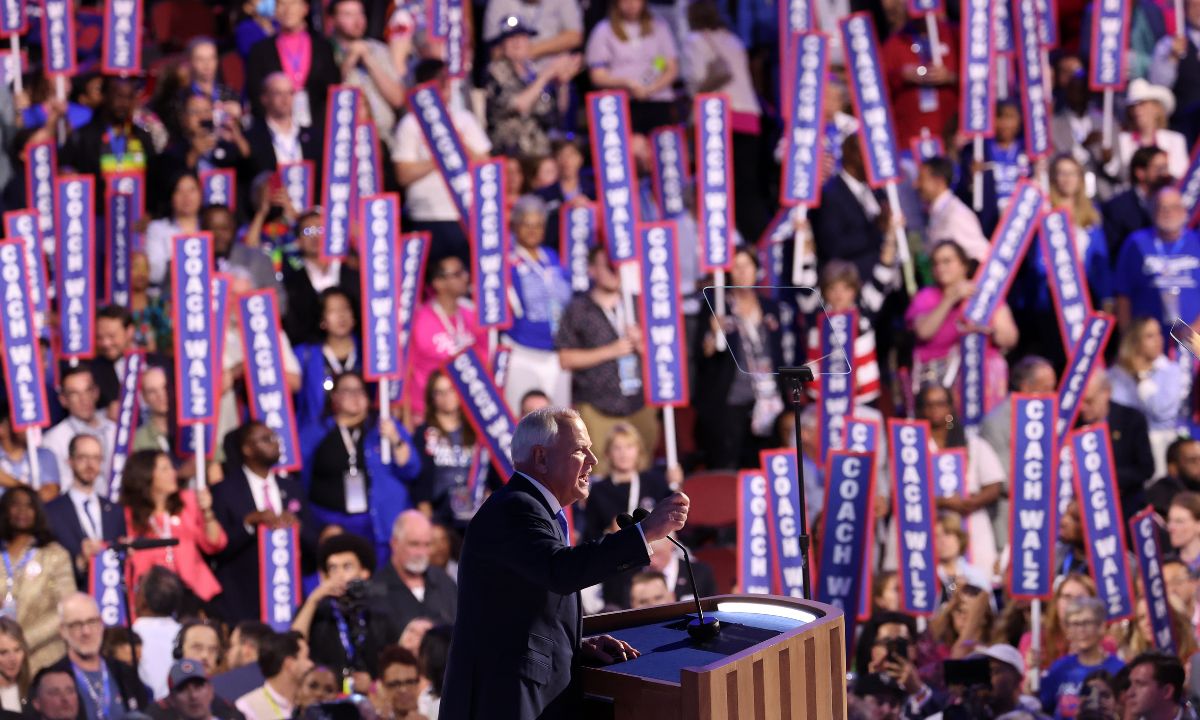Finally, This Election Season, Child Hunger is on the Table
Shore: With food prices unusually high, lawmakers on both sides of the aisle must come together and support an anti-hunger agenda.

Get stories like these delivered straight to your inbox. Sign up for The 74 Newsletter
As the presidential and vice presidential candidates campaign this election season, Americans are hearing about an issue that’s often ignored in politics, but has the power to change the nation’s future: child hunger.
The issue is not new, but the numbers are trending in the wrong direction: A new government report shows 19.2% of children lived in food-insecure households in 2023, the second consecutive yearly increase following a 15-year low in 2021, when just 10.2% of children lived in food-insecure households. The spikes came as pandemic-era policies expired, like the Enhanced Child Tax Credit in 2021 and emergency allotments for SNAP in 2023.
This is unacceptable, especially when the U.S. has the tools to end child hunger.
Free school meals have been around for more than 50 years. Both Democrats and Republicans have acknowledged that well-nourished kids achieve better academically, and everyone benefits from a stronger economy and greater national security, when children are fed.
For the first time in a long time, the role of school meals in eliminating hunger made it into the national conversation when Minnesota Gov. Tim Walz spoke of the issue while accepting the Democratic nomination for vice president.
While it may be unusual for hunger in the classroom to make a prominent appearance in a presidential campaign, it’s not unusual for an educator — which Walz was for many years — to insist that food is the most important school supply. For many kids, school meals are the most nutritious of the day, helping to fuel their success in the classroom and beyond.
Good work is happening across the country to reach more students with school meals. At least eight states, including Minnesota, have made school meals universal, meaning they’re available to all students regardless of family income. Others, like Texas, are getting rid of categories of need — making meals programs run more efficiently, reducing the stigma of receiving free or low-cost meals and feeding nearly 70,000 more kids breakfast as a result.
For decades, barely half of students who got free or reduced-price lunch also ate breakfast at school. Now, many schools have embraced breakfast-after-the-bell options, like letting kids eat in class during first period or offering grab-and-go options. This overcomes the challenge of getting to the cafeteria before school starts, and the stigma in doing so.
And in summer, when schools are closed, new flexibility in rural communities is allowing food service providers to reach many more kids with meals thanks to pick-up and delivery options.
These innovations and policy wins have helped feed millions more children each day.
But with food prices unusually high — an issue acknowledged by presidential candidates of both parties — lawmakers on both sides of the aisle must come together and support an anti-hunger agenda.
Just as school meals are an important part of a vision for a country without child hunger, so are investments in programs that connect families with the economic resources they need.
This year, Congress had the opportunity to expand the Child Tax Credit and extend a lifeline to families with very little income, ensuring they could receive the full refundable credit for every kid in the household and ultimately reducing child poverty by nearly half. But though the measure passed with overwhelming bipartisan support in the House, it was blocked in the Senate. With major tax policy negotiations on the horizon in 2025, lawmakers should prioritize reinstating an expanded Child Tax Credit.
When lawmakers make feeding children a priority, families get transformational improvements like the new Summer EBT program that launched this year, providing food assistance to the families of an estimated 22 million kids. It’s the first new federal nutrition program in decades, working alongside traditional summer meals offerings to make sure kids get the food they need during the hungriest time of year.
Yet, in this first year, 13 states did not participate, leaving money on the table that could have fed an estimated 8 to 9 million more children and helped their families stretch their food budgets. Summer EBT is a tremendous opportunity to end hunger when school is out. All 50 states must opt in.
Federal nutrition programs and tax benefits for working families are really investments in opportunity for everyone. School meals create the opportunity to learn. Summer EBT creates the opportunity for families to eat healthy all year round. The Child Tax Credit creates opportunities to achieve economic mobility. And the aspiration for opportunity truly is universal.These programs aren’t just good policy; they’re good politics, too. No Kid Hungry conducted statewide polls this year in Florida, Texas, Virginia and New York, and in all four states, respondents were nearly unanimous (93% agreement or above) that ending childhood hunger should be a shared bipartisan goal. In an election year that’s likely to see precincts won on slim margins, it’s prudent that aspiring leaders keep this in mind.
Get stories like these delivered straight to your inbox. Sign up for The 74 Newsletter

;)
